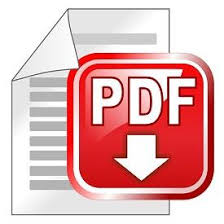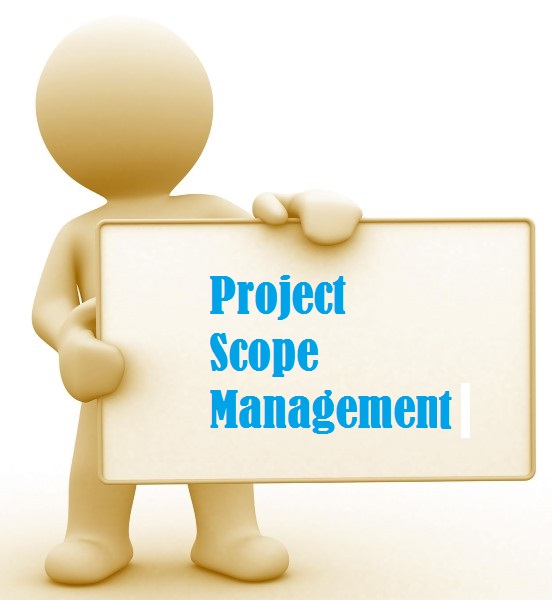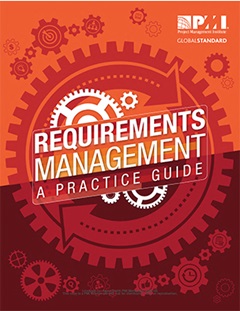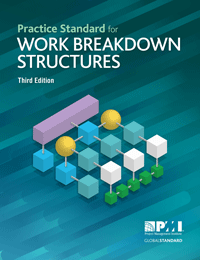Location:
PMKI > PM
Knowledge Areas > Scope Management.


- Scope management overview
- Collect and manage requirements
- Define and manage scope
- Create WBS & other Breakdown
structures
- Scope Validation, Verification and
Control
- Useful External Web-links &
Resources.
Other related sections of the PMKI:
- Cost estimating and
management, including Earned Value
 Project
Scope Management describes the processes required to
ensure that the project includes all of the work, and only
the work, required to successfully deliver the project's
objectives. It is concerned with describing and
controlling what is ‘in’, and what is ‘not in’ the work of
the project.
Project
Scope Management describes the processes required to
ensure that the project includes all of the work, and only
the work, required to successfully deliver the project's
objectives. It is concerned with describing and
controlling what is ‘in’, and what is ‘not in’ the work of
the project.
The first phase of scope management is defining precisely what has to be achieved to complete the project. The project team work with key stakeholders to assess the detailed project requirements, constraints, and assumptions, based on inputs from the client, or performing organization. such as the project charter, formal contract documents, lessons learned from previous projects, and/or by the use of requirement-gathering techniques (e.g., planning sessions, brainstorming, focus groups). The objective is to establish and agree the precise nature of the deliverables required to successfully accomplish the project's objectves.
The term scope can refer to:
Where the term project scope is typically viewed as including the product scope.
Scope management is achieved by:
Project requirements are the features, functions, and tasks that need to be completed for a project to be deemed successful. They define what has to be achieved and create clear set of parameters to work towards. Determining how the requirements will be implemented in the project's deliverables is a design process.
Creating the design may be:
However, in every project a fundamental prerequisite to success is making sure the project team fully understand the requirements of their client (even when the client may not fully understand their needs) and everyone agrees what the requirements are. This often requires negotiation, compromise, and trade off between the requirements and other constraints such as time and cost parameters.
WP: Data Gathering & Brainstorming. Gathering requirements needs a planned approach using a range of techniques.
WP: Defining Requirements. The factors to consider in developing a set of requirements.
WP: Ranking Requirements and Selecting Projects. The full list of requirements often needs to be limited an prioritized using techniques such as MoSCW.
WP: Requirements Traceability Matrix. Requirements traceability is the process that facilitates the description of each requirement and sub-requirement and then ensures the requirement is fulfilled.
Blg: Success and Stakeholders. When considering the relationship between success and stakeholders, one potential conclusion is that success is gifted to you by your stakeholders, but you have to earn the gift by delivering what they really require!
 PMI's Requirements
Management Practice Guide is available free of
charge to PMI members, see: https://www.pmi.org/pmbok-guide-standards/practice-guides.
PMI's Requirements
Management Practice Guide is available free of
charge to PMI members, see: https://www.pmi.org/pmbok-guide-standards/practice-guides.
 Fully
defining scope and then ensuring the specified
requirements are delivered is critically important to
achieving project success. There are a number of
documents that may be used to define the project’s
scope.
Fully
defining scope and then ensuring the specified
requirements are delivered is critically important to
achieving project success. There are a number of
documents that may be used to define the project’s
scope.
WP: Statement of Work (SoW). Statement of Work (SOW) is a formal document that captures and defines the work activities, deliverables and timeline the project (or a vendor) will execute against in performance of specified work for a client. The SOW typically forms part of a purchase order or contract but may be attached to a business case.
Art: Scope for Improvement Too. If a project’s client cannot ask for what it wants, the project team is highly unlikely to deliver what’s needed! Most projects have scope missed until its too late. This article is a discussion on a series of reports focused on scope omissions in major projects, that also discussed in Causes of project failure.
Art: Ethics is not enough. Recent cladding fires demonstrate that achieving reliable quality standards needs more than simply relying on the ethical standards of everyone in the supply chain - the supply system needs to actively support ethical standards to ensure the defined scope is delivered.
Configuration Management. Configuration management (CM) is a systems engineering process for establishing and maintaining consistency of a product's performance, functional, and physical attributes, with its requirements, design, and operational information, throughout its life. The product may be a document or a physical deliverable. The focus of CM is on ensuring all of the components of a deliverable (configuration management items) continue to work together as elements are changed over time, by handling changes systematically.
Configuration management includes processes for:
a. Configuration item identification, identifying and
characterizing each item in a database
b. Configuration status accounting:
i. Capturing and accessing information on
configuration activities
ii. Verifying continued conformance to
requirements
iii. Ensuring accountability is maintained and
changes are managed
c. Change management:
i. Knowledge of current project change
control processes
ii. Recording and reporting each change
iii. Assessing the value and impact of the changes
on the configuration items
iv. Communicating the changes to stakeholders
d. Configuration verification and auditing to ensure
performance and functional requirements have
been met.
 PMI's Practice
Standard for Configuration Management is
available free of charge to PMI members, see: https://www.pmi.org/pmbok-guide-standards/framework
PMI's Practice
Standard for Configuration Management is
available free of charge to PMI members, see: https://www.pmi.org/pmbok-guide-standards/framework
Systems Engineering: Is an approach that can assist in the design of the project's scope in complex situations. Systems engineering can be thought of as the principles and methods related to the successful engineering of systems, to meet stakeholder requirements and to maximize value. Systems engineering is problem-independent, and solution/technology-independent. See WP: Systems Thinking.
Front End Loading / Planning: refers to an increased focus on early planning and analysis to the defined scope is capable of achieving the desired outcomes for cost, schedule, and operating performance. It is the project phase that encompasses activities such as feasibility, concept, and detailed scope definition. Note that front end loading has many other equivalent and associated terms, including front end planning, advance planning, pre-project planning, schematic design, and design development. This approach is commonly used on major construction and engineering projects - see more.

 WP: Work Breakdown
Structures. Developing and using a Work
Breakdown Structure (WBS).
WP: Work Breakdown
Structures. Developing and using a Work
Breakdown Structure (WBS).
 PMI's
Practice Standard for WBS is available free
of charge to PMI members. The third edition applies the
WBS to the predictive, iterative, incremental, and agile
project life cycles; it also explores several different
types of decomposition in practice today.
PMI's
Practice Standard for WBS is available free
of charge to PMI members. The third edition applies the
WBS to the predictive, iterative, incremental, and agile
project life cycles; it also explores several different
types of decomposition in practice today.
See: https://www.pmi.org/pmbok-guide-standards/framework
Other breakdown structures:
Art: Breakdown Structures Revisited. Details of some of the different types of Breakdown Structure in use today; RBS, OBS, CBS, PBS and others.
Art: PBS -v- WBS, is
there a difference? The key differences
between, and uses of, the Work Breakdown Structure and the
Product Breakdown Structure. This article is based on an
APM (UK) publication, download: APM web briefing - Use of Product
Breakdown Structures and Work Breakdown Structures.
See more on the origins of the WBS and other business charts.
 Scope
verification = ensuring the deliverables are of an
appropriate quality and complete.
Scope
verification = ensuring the deliverables are of an
appropriate quality and complete.
This is a quality
assurance function - click through to see more.
Scope validation = acceptance of the scope by the client. Validation usually precedes the transfer of the deliverable to the client.
WP: V&V = the Verification and Validation of Deliverables. V&V should be a planned, on-going function that leads to the final acceptance of the project's deliverables by the client.
PMI Practice Standard for Work Breakdown Structures is available free of charge to PMI members: https://www.pmi.org/pmbok-guide-standards/framework
Configuration Management: Processes to establish and maintain consistency of a product's performance, function and physical attributes with its requirements, design and operational information; throughout the products life. PMI's Practice Standard for Project Configuration Management is available free of charge to PMI members: https://www.pmi.org/pmbok-guide-standards/framework
ISO Standard (with Australian adoption)
- ISO 21511:2018 – Work breakdown structures for project
and programme management
(AS ISO 21511:2022)